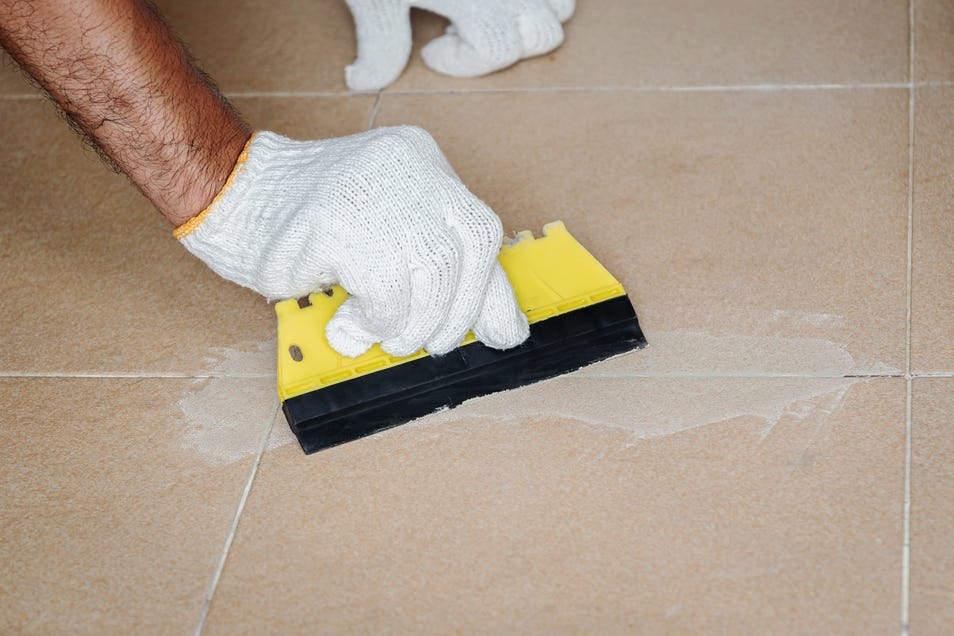How to Remove Soap Scum from Tile

Soap scum - fun to say, awful to look at. No matter how often you clean your bathroom, soap scum will always find a way to accumulate on your bathroom tiles.
Formed from soap, hard water minerals, body oils, and dead skin cells, this stubborn residue develops on tiles through repeated contact with soapy water.
Not only do they look unsightly, affect aesthetics, and lead to unpleasant odors, but they also harbor germs, bacteria, and mold, posing serious concerns about bathroom safety.
But fret not! By adopting the right cleaning steps and using reliable and powerful bathroom cleaners, such as Harpic, you can easily eliminate even the deep-seated soap scum from tiles.
Read on to learn how to remove soap scum from tile to keep them sparkling clean and sanitized.
What you’ll need
Gloves
Sponge
Microfiber towels
Removing soap scum from tiles
Follow the steps below to remove soap scum from the tile using bathroom cleaner trigger spray and bathroom cleaner (liquid).
Removing soap scum from tiles using a bathroom cleaner (trigger spray)
Spray the tile with Harpic Bathroom Cleaner Trigger Cleaner - a cleaner consisting of thick liquid formula with powerful cleaning agents to get rid of stubborn soap scum, stains, limescale, and even 99% of germs and bacteria.
Allow the bathroom cleaner to sit on the tile for a couple of minutes, ideally, 3 to 5 minutes, giving it enough time to cut through the soap scum so you can easily remove it.
Wet a non-abrasive sponge and wipe down the tiles using gentle circular motions to apply even pressure. Avoid scrubbing too vigorously, as it may damage the tile surface.
After wiping away all of the soap scum and cleaner residue with the sponge, rinse the tile with warm water. Continue rinsing the surface until it’s clean.
Dry the tile thoroughly using a fresh, clean, and completely dry microfiber cloth to keep the tile from developing more soap scum or mildew.
Removing soap scum from tiles using a bathroom cleaner (liquid)
Add 1.5 capfuls of Harpic Bathroom Cleaner Citrus in half a bucket of water (4 cups). You can make as little or as much of the cleaner as you’d like, so adjust the amounts accordingly to have 1 part of each.
Dip a non-abrasive sponge in the just-created cleaning solution and use it to wipe down the tiles. Avoid scrubbing too vigorously, as this may damage the tile surface.
Let the cleaning solution sit for at least 15 minutes so it has time to cut through the soap scum.
After letting the cleaning solution sit on the tile, use a damp sponge to wipe the soap scum and residue away.
Next, spray the area with warm water to rinse it completely clean. Once the tile is rinsed, wipe down its surface with a clean, fresh, and dry microfiber cloth to dry it completely.
How to prevent soap scum
Prevention is better than cure! Follow these suggestions to prevent soap scum from forming in the future.
Opt for liquid soaps, which contain less fatty acids and talc, making them less likely to leave behind residue compared to bar soaps and decreasing the buildup of soap scum on tiles and other surfaces.
After using the shower or tub, use a squeegee to remove excess water from tiles and glass surfaces, preventing soap scum from forming and reducing the need for deep cleaning.
Hard water contains higher mineral content, making easier for soap scum to form. Install water softening systems to reduce the mineral content in water, minimizing soap scum formation on surfaces like tiles and making cleaning easier and less frequent.
Ensure proper ventilation in bathrooms to reduce humidity levels, which can help prevent moisture buildup that contributes to soap scum formation on tiles. Learn how to properly ventilate your bathroom using windows, air vents, exhaust fans, and more.
FAQs
What causes soap scum to build up on tile surfaces?
Soap scum is formed into a solid substance due to the interaction between soap, hard water minerals, and dirt. When soap mixes with water, it creates a film that traps these particles, sticking to the tile and grout. Over time, this buildup becomes visible as a hazy or cloudy residue known as soap scum.
What is the difference between soap scum and hard water stains on tile?
Hard water stains are caused by the concentration of calcium and magnesium ions in the water. Soap scum is a combination of soap residue, hard water minerals, and dirt.
How often should I clean tile surfaces to prevent soap scum buildup?
To prevent soap scum buildup, it's recommended to clean the tiles weekly using Harpic Harpic Bathroom Cleaner Citrus or Harpic Bathroom Cleaner Trigger Cleaner.
.png?width=70&height=88&format=png&quality=50)